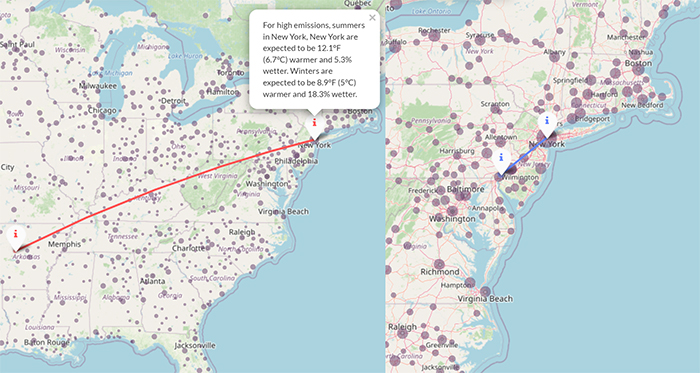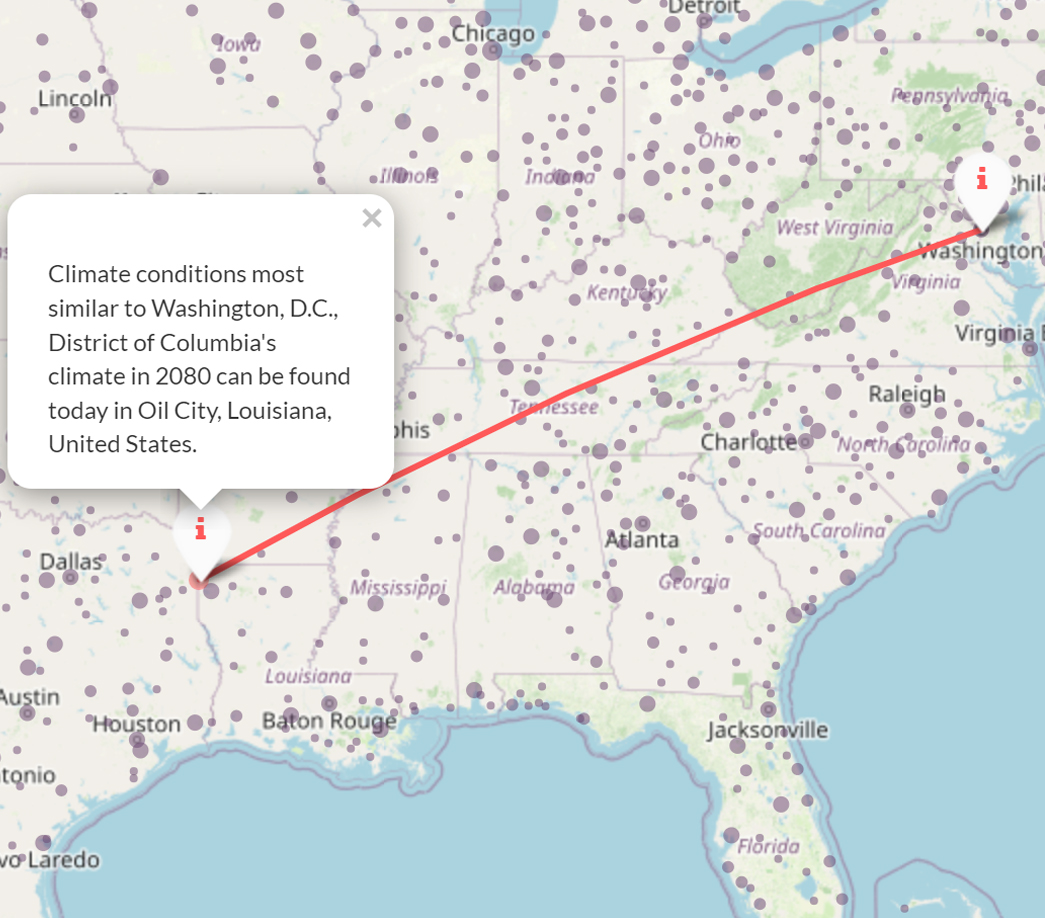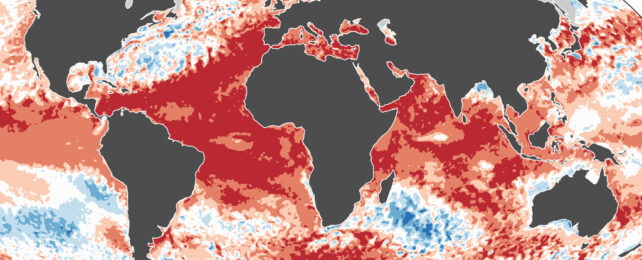As extreme storms, floods, fires, droughts, cold snaps, and heat waves hit us harder and more often than ever, more than half of our planet is predicted to shift into new climate zones by the end of the century.
A new interactive map, The Future Urban Climates, allows you to explore how your home's climate will be impacted.
Using data from the Intergovernmental Panel on Climate Change (IPCC), University of Maryland spatial ecologist Matthew Fitzpatrick matches 40,581 places around the globe to nearby locations currently experiencing their future predicted climate in 2080.
For example, a trip to northern Mississippi today would allow you to feel the equivalent climate New York City is expected to experience by 2080. However, under the low emissions scenario also modeled, the projected future climate is located far closer to home.
"In 50 years, the northern hemisphere cities to the north are going to become much more like cities to the south," explains Fitzpatrick.
"Everything is moving towards the equator in terms of the climate that's coming for you."

Estimates in 2015 found that almost 6 percent of Earth's land area had already shifted towards warmer and dryer climates by 2010, compared to 1950.
The most extensive changes seen so far have occurred in North America, Europe, and Oceania. The new map reveals what our world will look like as these trends continue through to 2080, but also what will happen under a lower emissions scenario if we somehow manage to change things around.
With an expected 6 °C (11 °F) of warming, Washington, DC, is on track to feel like current-day North Louisiana.

"The closer you get to the equator there are fewer and fewer good matches for climates in places like Central America, south Florida, and northern Africa," warns Fitzpatrick. "There is no place on Earth representative of what those places will be like in the future."
About 40 percent of the global population lives in these equatorial regions. That's more than 3.3 billion people heading towards a climate more extreme than anywhere we live today. Some researchers fear parts of the tropics may become uninhabitable, as there's only so much heat and humidity our bodies can tolerate.
People are already dying.
With temperatures reaching beyond predicted extremes last year, and no signs that governments and industries are putting any significant breaks on the fossil fuel emissions causing the problem, it's increasingly likely we're going to face the more extreme scenarios outlined in the map.
"I hope that it continues to inform the conversation about climate change," says Fitzpatrick. "I hope it helps people better understand the magnitude of the impacts and why scientists are so concerned."
You can search for your hometown here.
